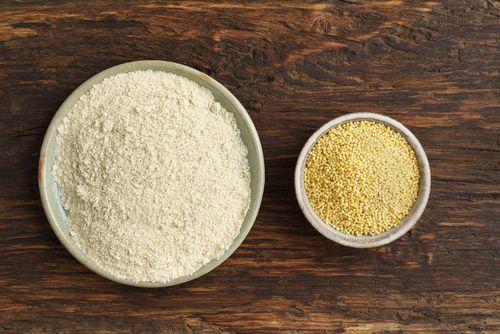, Naturopath
Brown millet flour integral it contains many mineral substances, trace elements and active substances that make it a beneficial food for the whole organism. Useful as a natural remedy for osteoarthritis, it is also used for the health of skin and hair. Let's find out better.
> 1. How whole brown millet flour is obtained
> 2. Properties and use of wholemeal brown millet flour
> 3. Products based on wholemeal brown millet flour

How is whole brown millet flour made?
Millet (Panicum miliaceum) is a plant of the Graminaceae family. It has always been used in Western cuisine for the production of flour and semolina mostly dedicated to macrobiotic cuisine.
The mile is a gluten-free cereal, therefore it is less suitable for baking than other flours. In order to be used for the production of leavened bread, millet flour must be combined with wheat flour or gum arabic (to be gluten-free).
Since millet is rich in lipids it can be kept for a short time in the form of flour, while in seeds the conservation is much longer. Therefore it is always advisable to grind the beans at the moment of use.
Properties of wholemeal brown millet flour
Whole brown millet flour is rich in trace elements and antioxidants. In particular, it is rich in silicic acid, calcium, zinc, phosphorus, potassium, fluorine, but also contains mineral salts such as magnesium, proteins, lipids and carbohydrates, which, all together, represent essential elements for the constitution of the skeletal system.
Wholemeal brown millet flour it is useful against osteoarthritis and for the beauty of skin and hair.
Millet flour contains silicic acid, per questo motivo è adatta all unghie, smalto dei denti, oltre che capelli e pelle; ma anche contro le malattie polmonari, l’asma e il catarro.
Silicic acid is also capable of stimulate the immune system and the formation of phagocytes that fight against viruses and bacteria in the blood.
Millet flour has a regenerating and remineralizing action, for this reason it is also useful during pregnancy, breastfeeding and for the elderly, as well as in case of intense physical activity.
Find out the difference between millet flour and wholemeal brown millet flour
Whole brown millet flour products
Brown millet flour can be used for making baked goods, for unleavened bread and piadina.
Millet powder, since it does not change the taste of food, it can also be added raw in smoothies, drinks or soups.
A recipe up your sleeve
Brown millet biscuits.
Ingredients:
- 50 gr of butter,
- 160 gr of brown sugar,
- 2 whole eggs,
- 1 pinch of salt,
- 600 grams of brown millet flour.
Filling:
- currant jam
- 120 gr of butter,
- 200 gr of dark chocolate.
Preparation: Beat the butter and brown sugar well to obtain a frothy mixture. Gradually add the whole eggs and a pinch of salt. Incorporate the brown millet flour. Using a pastry bag fitted with a notched opening, form the biscuits with the brown millet dough on a baking sheet lined with parchment paper.
Bake the biscuits in the preheated oven at 190 ° for about 12 minutes until they are golden. Combine the pairs of brown millet biscuits with the jam. For the glaze, heat the chocolate with butter in a double boiler and mix so that no lumps form. Dip the brown millet biscuits halfway into the chocolate and allow to cool.
Unknown cereals: kodo and red millet


























